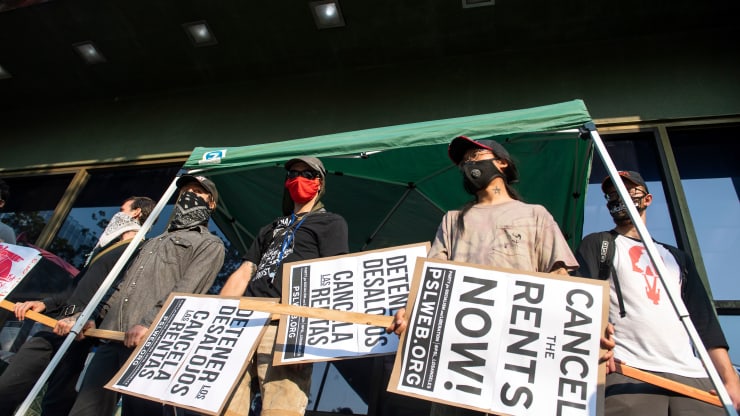The rich really are getting richer.
We know this, but two Federal Reserve economists have recently examined the evidence and concluded the gap is getting even wider.
Federal Reserve Board economists Isabel Cairo and Jae Sim found that the inequality gap has risen because owners of assets like real estate and stocks are benefiting from the rise of corporate power and rising profits, along with the decline of labor.
”[T]he before-tax profits share of U.S. corporations has shown a dramatic increase in the last few decades,” the authors wrote. The rise of corporate profits was strongly correlated with the decline of labor: “This correlation suggest that the rise of the profit share and the fall of the labor share may have been driven by a common cause.”
Stagnating wage growth and higher corporate profits have led to a rise in two forms of inequality: income inequality (the income share of the top households rising steadily), and wealth inequality (the net worth of the top 5% of households increasing 186% between 1983 and 2016), largely because of capital gains.
This is very evident when looking at data on stock ownership. While an oft-quoted Gallup Poll indicated that 55% of households own stock in 2020, it is the very wealthy who control almost all of this asset. A separate Federal Reserve report indicates the top 10% of households by net worth control 87.2% of the equities in this country at the end of the first quarter. While the top 1% have always controlled 70% to 80% of stock market value since record-keeping began in 1989, this is the highest level of ownership ever, other than the fourth quarter of 2019, when it was 88.1%.
Who owns stocks: Households by net worth
- Top 1% 51.8%
- Top 90-99% 35.4%
- 50%-99% 12.1%
- Bottom 50% 0.7%
(Q1 2020)
Source: Federal Reserve
For Ivory Johnson, head of Delancey Wealth Management and a member of the CNBC Advisory Council, these statistics are emblematic of the growing perception gap between Wall Street and Main Street.
“The majority of people don’t own stocks and they don’t care the Nasdaq is up 30 percent this year,” he told me.
While the wealth gap has been growing for decades, Johnson lays part of the problem at the feet of the Federal Reserve, who he says has been propping up stock prices for years.
“Twenty percent of U.S. companies are zombie companies — they only survive because the Federal Reserve is propping them up. You have a safety net for stocks provided by the Fed, but only a limited version of that for people who really need help.”
Broader wealth statistics recently published by the Federal Reserve are not much more encouraging. There is an equally wide gap between what the wealthy own and what the bottom 50% own.
It’s largely real estate.
The top 1% have 12.8% of their net worth in real estate. The bottom 50% have 54.4% in real estate.
It’s the other way around for stocks. The top 1% have 34% of their net worth in stocks, the bottom 50% have only 2.2%. The very wealthy also have much more of their wealth tied up in private businesses and “other assets.”
The Top 1% of households: Assets
- Equities 34.0%
- Other assets 22.4%
- Private businesses 21.7%
- Real estate 12.8%
- Pensions 5.9%
- Consumer durables 3.2%
Source: Federal Reserve
The Bottom 50% of households: Assets
- Real estate 54.4%
- Consumer durables 20.4%
- Other assets 12.0%
- Pensions 9.4%
- Equities 2.2%
- Private businesses 1.7%
Source: Federal Reserve
What to do? Cairo and Sim — the authors of the Federal Reserve report — go so far as to suggest higher taxes on the wealthy as a means to redistribute wealth: “Carefully designed redistribution policies can be quite effective macroprudential policy tools and more research is warranted in this area.”
Johnson says taxing the wealthy isn’t going to work, and not just because the rich have lobbyists. “You can tax wealthy people 100 percent and it won’t cover the deficit,” he told me. “The question is, what is fair and what will work?”



























